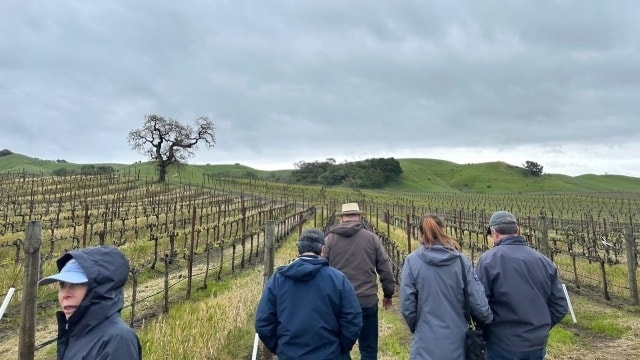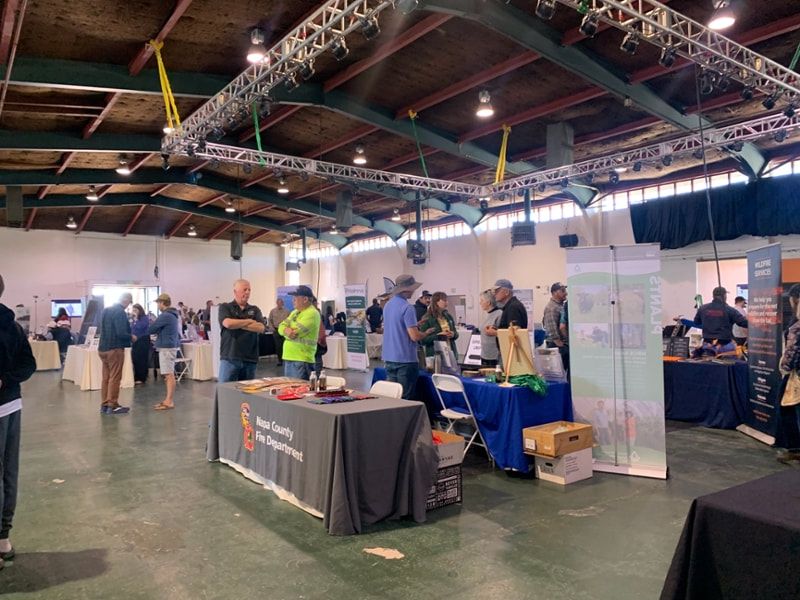|
Jennifer Huffman, Napa Valley Register As Caleb Mosley, put it “wine and viticulture have been in my DNA since childhood.”
When Mosley was 6 months old, his dad got a job as a vineyard and estate manager for a 35-acre property in the Santa Cruz mountains. “Through this opportunity, I witnessed the planting of a new vineyard and what the construction of a winery meant for those grapes,” he said. “There’s an element of being a caretaker of a property and its surroundings that matches my ethos.” The idea of stewarding the land for future generations “is a part of who I am and why I’ve followed in my dad’s footsteps.”
0 Comments
Press Release Photo by Suzanne Becker Bronk Paul Goldberg has been named the Napa Valley Grapegrowers 2024 Napa Valley Grower of the Year. Goldberg is President of Bettinelli Vineyards, overseeing the development and management of high-quality vineyards throughout the Napa Valley. As an active member of the Napa Valley Grapegrowers for over 15 years, Goldberg has served in various leadership roles, including on NVG’s board of directors for 8 years and as past board president.
Kerana Todorov, Wine Business  Photo by Kerana Todorov, Wine Business Napa County residents of all ages braved the rains and cool temperatures this weekend to have a closer look at vineyards near where they live.
Afternoon in the Vineyards is an opportunity for the community to see what is going on in the vineyards, V. Sattui president Tom Davies said Saturday at Henry Ranch in Carneros. Henry Ranch is one of St. Helena-based V. Sattui’s vineyards. Press Release For nearly 50 years, the Napa Valley Grapegrowers has provided education and advocacy that supports the preservation of local agriculture and promotes a thriving, prosperous community. Aligned with this work, we’ve built events and resources that support the ongoing cultivation of new wine and viticulture professionals. Our goals are to foster young professionals already working and living in the Napa Valley, position the Napa Valley as a career destination for aspiring wine-industry professionals, and cultivate strong connections with the leaders of tomorrow.
Press Release Napa Valley Grapegrowers (NVG) and Napa Valley Vintners (NVV) present the 20th annual Afternoon in the Vineyards on Saturday, April 13, from 1:00 to 3:00pm. Afternoon in the Vineyards is an annual program for Napa County residents to discover unique vineyards in their neighborhood and learn about the grape-growing process, sustainable vineyard practices, and the resiliency of the Napa Valley wine community.
Samie Hartley, Napa Valley Register If you’ve ever wanted to learn more about Napa Valley’s legendary agricultural legacy and evolution straight from the grapegrowers and winemakers, Afternoon in the Vineyards is the place to be on April 13.
Napa Valley Grapegrowers and Napa Valley Vintners team up to host the 20th iteration of this event — it used to be annual until 2020 and the COVID-19 lockdown mandates — which invites Napa County residents to tour vineyards to gain a better understanding about sustainable vineyard practices that keep the Napa Valley wine industry viable despite drought, climate change and wildfires. Aly Brown, Bay City News
Third Annual Fire Resources Fair Shares Key Info on Wildfire Preparedness, Structure Hardening3/18/2024 Katherine Martine, Wine Business  Photo by Katherine Martine, Wine Business The Napa Valley Grapegrowers along with Napa Valley Vintners, Napa Firewise and CalFire/Napa County Fire hosted the third annual community Fire Resources Fair on March 16, a sunny afternoon of speaking with various fire protection exhibitors, meeting with furry land grazing partners and learning key insights on home and business hardening from Napa County Fire Administrator Dave Shew.
“Being fire prepared is a community effort, and Napa Valley Grapegrowers loves having the opportunity to host this event with our partners to promote fire resiliency in our community. It’s also a great way to showcase how responsible conservation practices employed in the vineyard create positive benefits for the environment, the natural ecosystem, and our entire community,” said Molly Moran Williams, the industry & community relations director for Napa Valley Grapegrowers. Press Release Napa Valley Grapegrowers (NVG) and Napa Valley Vintners (NVV) present the 20th annual Afternoon in the Vineyards on Saturday, April 13, from 1:00 to 3:00pm. Afternoon in the Vineyards is an annual program for Napa County residents to discover unique vineyards in their neighborhood and learn about the grape-growing process, sustainable vineyard practices, and the resiliency of the Napa Valley wine community.
|
Contact UsFor press inquiries regarding the Napa Valley Grapegrowers or the Napa Valley agricultural community, please contact Caroline Feuchuk, Marketing Director, via email or (707) 913-8212 Archives
June 2024
Categories |
|
